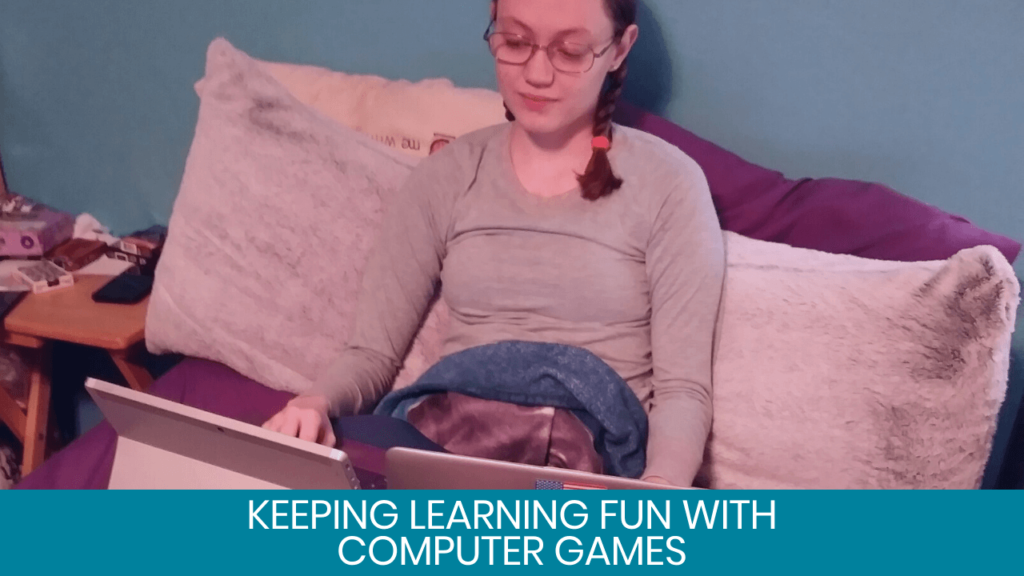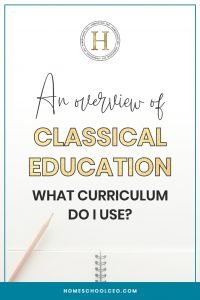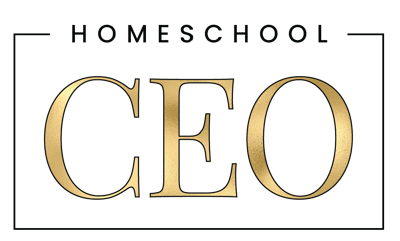This is Part 2 of a series of guest posts by Heather Weber, home-schooling veteran of over 20 years. Heather home-schooled her four children from birth through high school.
“I want to homeschool, but I don’t know what curriculum to use.”
This was actually my first question as well. Though I was a trained teacher, I had no idea where to find curriculum. I had no idea how my principal ordered the books or found the publisher’s catalogs.
When I started twenty-five years ago, there were no computer programs to provide a complete program. Even if there was, I couldn’t see myself using only computer-based programs for school. My husband and I knew we had one focus: instilling the joy of reading. Once they could read, they could teach themselves anything. To achieve that goal, we would read, read, and read some more in our house.

The Well-Trained Mind (WTM) by Jessie Wise and Susan Wise Bauer was a welcome fountain of information for curriculum guidance. The second half of their book is all about how to teach each subject to the different abilities of the three stages of learning. They explain what to focus on when choosing a curriculum. They did include some recommended programs, but admit that each family will need to choose what works well for them.
How does this work?
My best example is in teaching Grammar, a subject that is not my forte’. They stress the need to learn the different parts of speech, and the best way to learn that is to diagram the sentences.
Confession time here, I hated diagramming in English class. I needed a program that could teach me, as well as my children. I tried the first program they listed for 2 years, but it was not for us. It did a great job of teaching the parts of speech, but the lessons required 30-40 minutes of me working directly with just one child. That didn’t work with when I had four active children.
While attending a homeschool conference, I discovered a different program from Rod and Staff that also stressed sentence diagramming. We changed over and never looked back. Five minutes of my reading the lesson to the child, and ten minutes of homework.
As the grades went up, I learned along with her mastering the concepts that eluded me in 8th grade. It was wonderful, and I was excited to see, in the second edition of WTM, Rod and Staff was added to the list of recommended choices for Grammar.
Keep in mind, just because one curriculum didn’t work well for one family, doesn’t mean it wouldn’t work well for you. Your family might thrive with a curriculum that would bog down another family.
Is it okay to change curriculum after some time?
Yes, it is. I started out with Veritas Press history for five years, but then changed to Story of the World (SotW) for history. SofW hadn’t been created when I began homeschooling, and is very similar to Veritas Press. I usually recommend both to new homeschoolers, though there are many to choose from. New curriculum is being developed yearly.
The best program for your family might still be in the planning stages. I switched for the complete stories written out in one book format, and, the bonus of the stories on Audio CD. Suddenly I had 30 extra minutes available to me while they still learned their history.
How much time do we need to spend per subject?
If you have picked up the WTM book, you might notice the authors offer an estimate of time needed to accomplish each subject. Ignore that. The authors stated once that the editor insisted on including that information.
The truth of the matter is that each child will need a different amount of time. One child might whiz through English lessons, but struggle through math, and vice versa. Take the time you need, and shorten the lessons you can. For example, I only assigned half the math homework. If the child did well, we moved to the next lesson. If the child struggled, we still had half of the lesson to practice.
How do I make learning fun?
A trip to the library once a week was a fun day. In the early years, library books served as their history and science curriculum. We had books, books, books everywhere. My first child struggled to learn to read on her own, but she loved to listen to stories, and often “read” books to her younger siblings.

As I raised my children, I learned one of the best benefits of homeschooling was all the time we spent together. This was achieved the easiest by keeping the children off the computer and TV. I did allow my children to play on some computer programs. Jump Start grade level CD’s are still fun for my teenagers, when they can find a computer that will play them. Where I flashback to playing Pacman, they flash back to filling in the multiplication facts faster and faster to beat their old records.
Are computer-based programs better than paper-based books?
Using a computer program for all their school subjects is more like sitting in a chair all day at school, being taught by a teacher at the chalkboard. I know there are situations when that option for curriculum is necessary, such as a long-term family illness.
A few children will simply thrive with computer work instead of paper-based books, based on their learning styles. However, more and more studies are claiming learning from reading books provides more retention than reading on a computer.
Read many books yourself as you pick the right path for your homeschool. Whether you choose to follow Classical education or the ideas in The Well-Trained Mind, or follow a different path, such as Charlotte Mason or Montessori, or choose a full service publisher such as Abeka or many other, or even decide to “unschool”, the more you take time to learn, the more your children will see the value in learning for themselves.
Read Part One of this series here.





